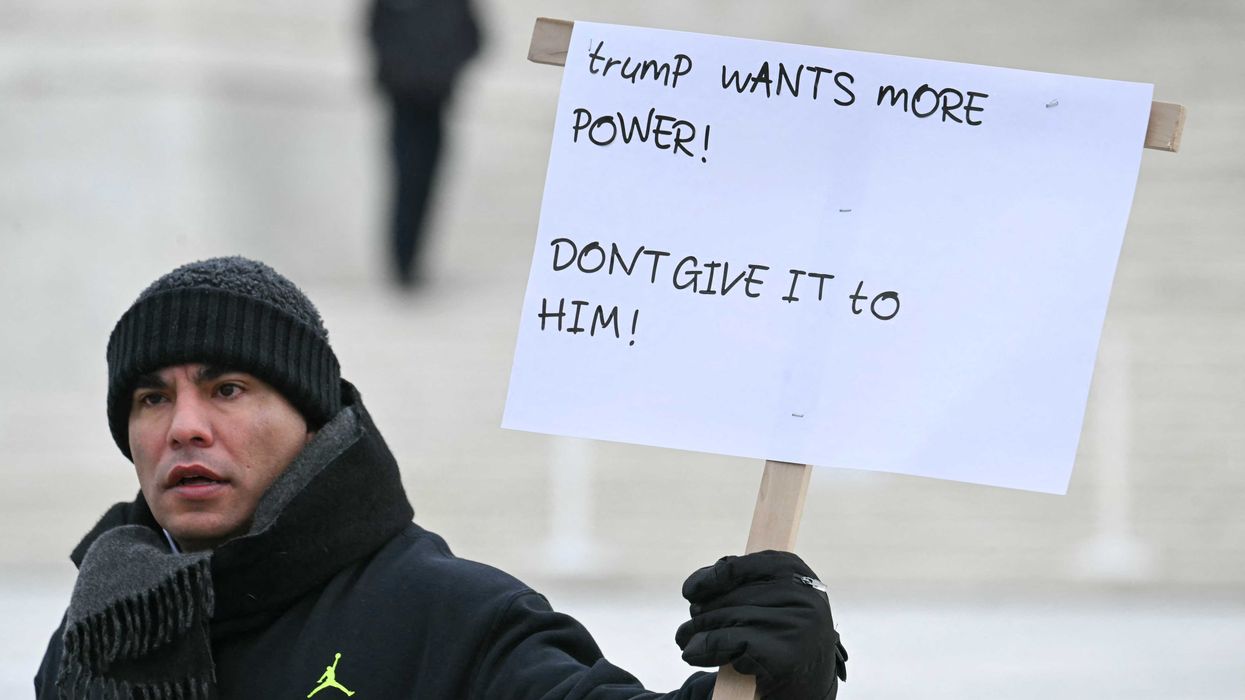STU: And since we're coming off bathroom talk, maybe we should start with the 30 for 30 documentary on the decathlon that just came out. ESPN just launched a podcast for the documentaries on that topic, and they tell great stories from sports history. They're really well done. Pat and I both love them. But I listened to the first one, which was about Dan and Dave. Do you remember Dan and Dave in the '90s? It was a huge --
PAT: Athletes. Expected to win the gold and silver for the Olympics.
STU: In 1992 in Barcelona. So Reebok, at the time at the time were competitors with Nike trying to raise their profile dumped $25 million into this ad campaign for these two guys that no one had ever heard of and built a rivalry leading up to the Olympics. Well, the whole story is -- I mean, it's a great story because they dumped all of this money in it, and it really didn't work out. Although, there are parts of it that did, and the documentary covers all the ins and outs of it. But when you're talking the decathlon and the Olympics, you're talking about Bruce Jenner, though. Bruce Jenner is the guy when you're talking about American history. 1976, he's the guy.
PAT: He was on Wheaties boxes. He was a household name. He was a major brand in and of himself. I mean, he was an American Moore.
STU: And I don't care --
GLENN: Notice the way we're even talking about this. We are discussing Bruce Jenner as if he's dead.
JEFFY: Was. Yeah. Was.
GLENN: He was a household name.
STU: Yeah.
GLENN: So the Bruce Jenner that we grew up with is dead.
PAT: Uh-huh.
GLENN: He has been reborn as Caitlyn, and in order to talk about him as a man, it has to be past tense.
STU: Right. So but when you're talking about him in that past tense, even if you are a person who says I'm calling them -- I'm calling her Caitlyn now, and you're fully onboard with that, you still refer to him as Bruce when you're talking about 1976; right?
GLENN: Yes, you have to.
PAT: And here's what they did. This is either Dan or Dave. I'm not sure.
>> I remember eating lunch with Bruce Jenner and Bruce kept telling me. Only thing people are going to remember is the Olympic games. And I thought to myself, man, this guy's crazy.
PAT: This guy is called Bruce. This man.
GLENN: Wait a minute. Are you saying that he's in trouble for this?
STU: Well, listen. There's another clip. I think we have Dave as well talking about this, Pat.
Well, it's interesting. Jackie Joyner-Kersey made the comment that I could be the next Bruce Jenner. And that is what I was striving to do, you know, most of my career. He was the hero that we all wanted to be in 1976, and he was the golden boy.
GLENN: This is all accurate.
PAT: Golden boy, hero.
STU: That's how you would do it; right?
GLENN: Yes.
STU: Even if you were completely onboard.
GLENN: Now here comes ESPN.
>> It's the story of a 1992 Reebok ad campaign 25 years ago this summer unlike anything anyone had seen before. Reebok spent some $25 million on the campaign featuring two top decathletes. A sum equal to their prior year's marketing budget. Those who remember the story remember it as a bust. But there are many more twists and turns along the way for Reebok, the two athletes, and the sport of track and field.
STU: All right. I'm ready.
>> One note, this episode features references to legendary decathlete Caitlyn Jenner.
PAT: Wait. What? Legendary athlete? There is no legendary decathlete Caitlyn Jenner. Look it up.
STU: You're not going to see it.
PAT: You're not going to see it.
>> First to be referred to as Bruce in regards to her decathlete career.
PAT: In regards to her decathlete.
>> So she prefers to be referred to as Bruce.
STU: They put a disclaimer at the beginning of this podcast to tell you that they're calling him Bruce when he was Bruce. However, even when Bruce or Caitlyn now says he wants to be referred to as Bruce, they still feel the need to tell you that it's Caitlyn and Caitlyn was the famous decathlete from the 1970s.
GLENN: Unbelievable.
PAT: We're rewriting history.
STU: We're rewriting history. Caitlyn is not in the record books.
PAT: There's no legendary decathlete named Caitlyn Jenner. There just isn't one.
STU: If Caitlyn Jenner -- if Bruce Jenner was a woman in 1976, which is what we're supposed to believe, we should strip the medals away from Bruce Jenner because Caitlyn was performing in the wrong decision. This is absolutely false advertising by her; right? If Caitlyn Jenner was actually Bruce at the time and was a woman, that would be against Olympic rules to compete in that division.
PAT: ESPN is ludicrous. They're ludicrous.
GLENN: ESPN has gone -- and it's the Disney mentality. They've just gone nuts. They've just gone nuts.
STU: I mean, I can understand. If you want to be onboard and say, hey, it's Caitlyn now, and I'm going to call her a her. Whatever she wants, we're going to do. But to change history and say there was a legendary decathlete named Caitlyn Jenner is just ridiculous.
GLENN: I don't have a problem with the disclaimer just because of all the people who can be it upon themselves to say I'm going to be the sentinel and the guardian for Caitlyn. I have no problem with the deal saying, hey, this story involves now Caitlyn Jenner who prefers to be called Bruce for this time period of his life. And then leave it at that. But what they did is they're being the guardians and basically saying, hey, we all have to accept him as her now because that's what he prefers. But he also prefers -- she also prefers to be called him for this time period, but we're not going to listen to that because we know better.
STU: Yeah.
PAT: Yeah.
GLENN: That's crazy.
STU: They're saying Bruce is wrong.
GLENN: Yeah, they are.
STU: That's how it comes off.
GLENN: Their bigotry is showing here.
STU: Yeah.
GLENN: They are not about "Oh, let's celebrate our diversity, and let's celebrate how each of us can make our own way and decide who we are. No. She just asked for you to call her him for this time period. Now it's complex.
PAT: It is.
GLENN: But it's not that complex. You're saying she is wrong. She was always a she and never a him, no matter what he says.
By the way, don't you ever call him a him when it's her because of his choice to be her.
STU: Because I think you can take it they put the disclaimer in to push aside liberal complaints about it.
GLENN: Yes, I agree.
STU: You can say that. However, the way they phrase it.
GLENN: The disclaimer is fine. But he starts with this includes Caitlyn.
STU: Legendary decathlete.
GLENN: That's in violation of what he just asked you to do.
PAT: Right. Right. So what -- I think they're covering their butts for other transgendered persons who don't feel the way Caitlyn Jenner does.
GLENN: Aren't we supposed to celebrate diversity?
STU: No. Absolutely not. Not in this circumstance.
GLENN: Aren't we supposed to celebrate what you want to do as an individual?
PAT: No.
GLENN: It exposes that as an absolute lie, and it exposes ESPN as nothing but cowards. Just cowards. This is not the only one, though. Have you seen the ad -- I don't even know. Who is running it?
PAT: NCAA is running it.
GLENN: NCAA. The one. Are we talking about the same ad where they're saying --
PAT: The gender thing?
GLENN: Yeah. Gender doesn't play sports?
PAT: Yeah, listen to this. By the way, these are a whole bunch of different women playing sports here.
>> Enough.
GLENN: Uh-oh.
>> Yeah, I'm over it.
>> We shouldn't need commercials to tell you we're powerful.
>> No thanks.
>> Genders don't play sports.
>> Athletes do.
GLENN: Then why do we have title 9?
PAT: Right. We don't need it anymore. If there's no gender in sports.
GLENN: Why do we have the WNBA? I would really like to suggest to the NBA that they start to draft women.
STU: The NBA subsidizes the WNBA. There would be no Ws in the WNBA if that was the case.

 JIM WATSON / Contributor | Getty Images
JIM WATSON / Contributor | Getty Images
 Joe Raedle / Staff | Getty Images
Joe Raedle / Staff | Getty Images AASHISH KIPHAYET / Contributor | Getty Images
AASHISH KIPHAYET / Contributor | Getty Images Harold M. Lambert / Contributor | Getty Images
Harold M. Lambert / Contributor | Getty Images